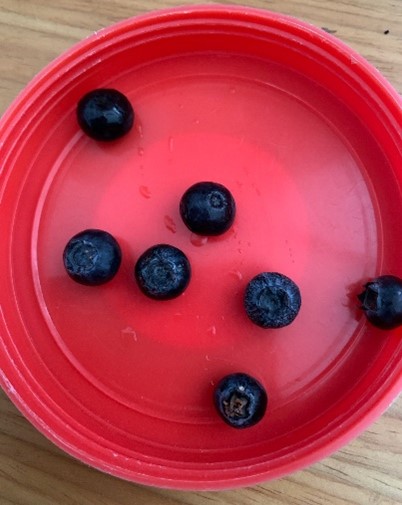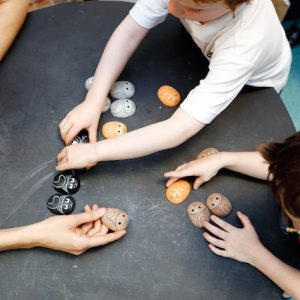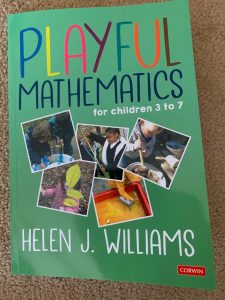What is it?
(…) subitizing is the direct perceptual apprehension of the numerosity of a group.
Clements, 1999
The term subitising (or subitizing) comes from the Latin ‘to quickly recognise’ and is the ability to recognise the number of objects (subitise) instead of counting them one-by-one. Subitising is key to understanding the composition of numbers – in other words – understanding that one number can be made up from (composed from) two or more smaller numbers.
We perceptually subitise up to about 4, or maybe 5, items. Research suggests that young children possess and spontaneously use perceptual subitising – which is the inbuilt ability to instantly recognise the number contained in small sets without counting them – and that subitising emerges before counting (Clements 1999).
With larger groups over 4 or 5 items, we conceptually subitise. Conceptual subitising makes use of our ability to perceptually subitise smaller groups to establish the quantity of a larger group. It is the way we see a 6-dot domino and ‘just know” the total number by subitising the two groups of 3.
For example, look at the image of these blueberries.

If we ask “How do you see these?”, we might hear replies from different children to establish the overall quantity of 7 such as: two 3s and a 1; or; 2, 2, 2 and 1; or; 3, 2 and 2, and so on. We welcome the different ways of ‘seeing’ an amount in this way.
This article, from Douglas Clements, id good for background reading on subitising.
Why is it important?
Young children may use perceptual subitizing to make units for counting and to build their initial ideas of cardinality.
Clements, 1999
Subitising is an important skill to develop, to broaden and deepen children’s understanding of the key ideas of cardinality (‘how manyness’ a number represents) and composition. It is key in the development of children’s number sense. Developing the skills of counting and recognising amounts is more complex than we might think. There is a lot to understand and it takes children some time to develop firm links between their understanding of quantity and their knowledge of numbers (Nunes and Bryant 2009).
Drawing children’s attention to quickly recognise arrangements of small amounts (up to five) throughout their day builds their confidence and sets up the process of becoming confident subitisers. We do not then ask them to count to check, but rather say: “Three! Well done, you recognised there are 3 there without counting them.”

What to do?
Subitising can be taught with enjoyment on behalf of both adults and children through playful activities. It is not just about recognising regular dice patterns. Although it is important that children are supported to instantly recognise more regular patterns such as these (when playing a game always cover the rolled dice with a pot before saying how many to move or to collect), what is important is to provide plenty of opportunities for children to see, and say what they see, when the items are not in a ‘regular’ arrangement, e.g. small handfuls of objects.
Here are some initial ideas to get you started. You and your children will think of many more.
Quick Glimpse
- Use the strategy of a quick glimpse (“peep”) of different arrangements of small amounts of physical objects.
- Discuss with the children what they see and how they see it. Use the wonderful overhead projector, or a visualiser and use real items you can move about.
- To begin with, use items of the same colour to focus on the differing smaller amounts “hiding” inside. Use both more organised as well as random arrangements. Investigate on this site for some great ideas.
Big and Outdoors
- Do similar BIG and outdoors!
- Later, when children are confident with instant recognition, you can link the amounts to numerals.

Show me
- ‘Throwing’ out the correct amount of fingers when someone calls out a number. Follow this by showing the same amount a different way or using both hands; eg: 5 as all the fingers on one hand, then 3 on one hand and 2 on another, etc.
- Children showing the number as ‘Bunnies ears’, out of sight, behind their heads is harder.
Matching Pairs
- Find matching pairs of small amounts of different objects hiding under flower pots; eg: 1, 2 or 3 cubes clipped together, 1, 2 or 3 pebbles, 1, 2, or 3 strips of ribbon, etc. Lift the pots one at a time to see if you can find the same amount under another pot.
- Also, try playing a ‘matching pairs’ game with dot-cards (try buttons glued in different positions onto cards) or dot arrangements on paper plates. The children in this ‘mathematical moment’ from The Early Childhood Mathematics Group are exploring a set of large dominoes.
All these experiences will make a real difference to your children’s understanding, fluency and confidence with numbers.
Keep it going. Subitising does not end at Reception.
Many thanks to Dr Helen Williams for writing this article for us.

Dr Helen J Williams is an independent educational consultant specialising in the learning and teaching of Early Years and KS1 mathematics. She has a special interest in developing effective, research-based, playful opportunities for learning.
She tweets as @helenjwc and blogs (sporadically) here.
Her book “Playful Mathematics for Children 3 to 7” was published by SAGE in March 2022.
References
- Clements, D.H. (1999). Subitizing: What Is It? Why Teach It? Teaching Children Mathematics, March. Reston: NCTM
- Nunes, T and Bryant, P. (2009). Key Understandings in Mathematics Learning: Paper 2: Understanding whole numbers. London: Nuffield Foundation


